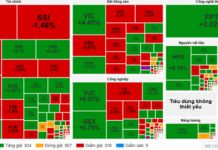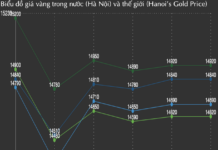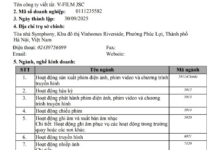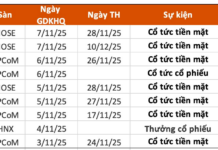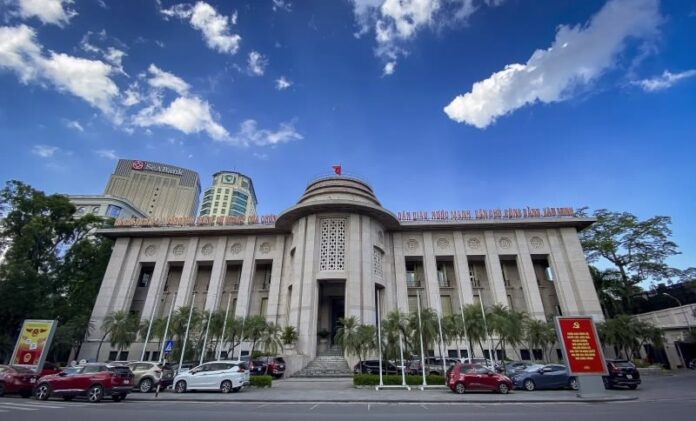
Illustration
On November 28, the State Bank of Vietnam (SBV) announced an increase in the credit growth target for 2024 for credit institutions (CIs), based on specific principles to ensure transparency and fairness. This additional limit is a proactive measure by the SBV, and CIs do not need to make a request for it.
According to the SBV, this adjustment is made possible by the successful control of inflation, which remains below the target set by the National Assembly and the Government. It also aligns with the Government and Prime Minister’s directives on flexible, effective, and timely credit institution management to meet the capital needs of the economy and support production and business activities.
Moving forward, the SBV will continue to closely monitor domestic and international market developments and stand ready to provide liquidity support to enable CIs to extend credit to the economy. The SBV will also promptly implement appropriate monetary policy measures as needed.
In a document sent to commercial banks, the SBV stated that CIs with a credit growth rate of at least 80% of the previously announced target can proactively adjust their credit balance based on the following principle: Additional credit balance compared to the previously announced SBV target = Credit balance as of December 31, 2023 x 2023 Ranking Point x 0.5%.
While the SBV did not disclose the list of institutions eligible for this increased limit, several banks had previously expressed their desire for higher credit quotas.
At the Regular Government Meeting with joint-stock commercial banks on September 21, HDBank Chairman Kim Byoungho shared that their credit growth had surpassed 15% at that point. To further boost credit, HDBank requested that the SBV consider allocating additional targets to credit institutions with strong capital allocation capabilities, based on a balanced approach to management objectives and a review of the situation in the fourth quarter.
At the same event, LPBank General Director Ho Nam Tien noted that their credit growth had reached 15.97% (with an additional balance of nearly VND 44,000 billion), the highest figure in the system at that time.
During a Q3 investor meeting, Nam A Bank’s leadership revealed that their credit growth had climbed to 14% by the end of August, utilizing 85% of the quota allocated by the SBV. They anticipated a further increase in their limit.
Recently released financial reports also showed that several banks had achieved much higher loan growth rates than the industry average in the first nine months, including Techcombank (20.8%), LPBank (16.1%), HDBank (16.1%), Nam A Bank (15.8%), MB (14.9%), TPBank (14.4%), MSB (14.4%), ACB (13.8%), and VPBank (12.2%). These banks are likely to be among those receiving higher credit quotas.
Earlier in 2024, the SBV allocated the entire credit growth target for CIs, corresponding to an approximate 15% industry-wide increase. This allocation method differed from previous years, when the SBV would divide the quota into multiple installments and require banks to submit requests for additional allocations.
According to the SBV’s leadership, this change signaled to banks that capital injection into the economy this year must be more robust, decisive, and responsible.
“If, in previous years, we considered these as allocations or distributions, now it is a mechanism to encourage banks to strive to achieve their targets,” said Deputy Governor Dao Minh Tu at a press conference at the beginning of 2024. “Because last year, while some banks fully utilized their quota, many others did not even come close, and some even had negative credit growth. These banks with low or negative growth may have been hesitant to extend credit. Therefore, this change in mechanism is intended to motivate them to work towards achieving their assigned credit targets.”
On August 28, the SBV announced an increase in the credit growth target for banks with a credit growth rate of at least 80% of the target announced at the beginning of 2024.
Thus, since the beginning of the year, the SBV has made two adjustments to the credit quota for banks with high credit growth rates. Conversely, banks with slower credit growth rates are likely to face reductions in their limits.
Speaking at a regular press conference earlier this year, Deputy Governor Dao Minh Tu stated that banks failing to extend credit would have their credit limits transferred to other banks.
“We will take firm action against banks with low credit growth rates, especially given that the SBV has allocated full credit limits to commercial banks from the beginning of the year,” said Mr. Tu at the conference.
According to Mr. Tu, the SBV “will transfer the targets of banks with low credit growth to proactively create favorable conditions for banks with potential for credit development in the coming time.”
With the banking sector’s planned credit growth rate of 15% for the entire year, the system will need to inject more than VND 2 million billion into the economy in 2024. As of November 22, 2024, system-wide credit growth stood at 11.12% compared to the end of 2023, leaving a growth potential of approximately VND 520,000 billion for the last six weeks of the year.

